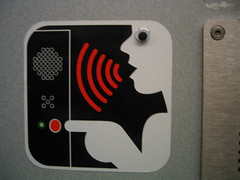
To celebrate the city and offer up a way to carry a map in your pocket, a design firm in Korea has published a heart-shaped version of the New York City subway map.
The PSFK design blog has more about this one-of-a-kind map:
A group of Korean graphic designers called Zero Per Zero have a unique take on the typical subway map of New York City. Playing on the I Love New York logo, the entire system is visualized as a big heart. The final design was the 2008 Design For Asia Grand Award Winner for a City Railway System which seems a bit odd considering it’s a remake of an American system, but we certainly applaud the simplicity and beauty of their artistic vision.
This playful design actually functions as the map it remixes and on closer inspection, it includes pictorial representations of remarkable locations throughout the city. It’s great to see designers offer a new interpretation of such a recognizable map in a way that may even improve the mood of some of NYC’s grumpy commuters.
The map itself costs under $7 but shipping from South Korea pushes that total up to around $20. I think it’s well worth it for map collectors.
After the jump, a detail of the map, and remember that the subways are running on a Sunday schedule today. Allow extra time for travel, and have a Merry Christmas!


 With the recent
With the recent  Back in November, when The Daily News first reported on the
Back in November, when The Daily News first reported on the  Based on news coverage of the Ravitch Commission’s report, you could be forgiven for believing that most of Brooklyn commutes into Manhattan via automobile over the East River bridges. After all, reporters and sources act as though tolling the East River bridges represents a direct challenge to our American way of life.
Based on news coverage of the Ravitch Commission’s report, you could be forgiven for believing that most of Brooklyn commutes into Manhattan via automobile over the East River bridges. After all, reporters and sources act as though tolling the East River bridges represents a direct challenge to our American way of life. During the press gaggle prior to the
During the press gaggle prior to the 





 While
While